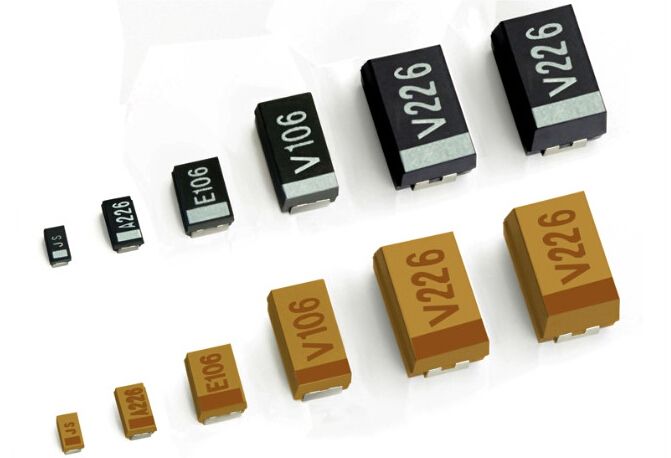On July 20th, the reporter learned from the China Photovoltaic Industry Association that in the first half of 2017, the installed capacity of newly-added photovoltaics in China exceeded 24GW, among which the distribution will reach more than 7GW, an increase of nearly 3 times year-on-year.
Unchanged subsidies boost growth
“Distributed photovoltaic installations are growing rapidly. This is a major bright spot for the development of the photovoltaic industry this year. Distributed photovoltaic installations are expected to exceed 10 GW this year,†said Xing Yiteng, deputy director of the New Energy Division of the National Energy Administration.
Xing Yiteng introduced that in the first half of 2017, the country’s newly installed capacity of photovoltaics exceeded 24 GW, among which distributed photovoltaic installed capacity exceeded 7 GW, an increase of nearly 3 times year-on-year. Residents' distributed photovoltaic installations have experienced the most rapid growth, with a year-on-year growth of more than 7 times.
It is worth mentioning that the new installed PV capacity in June reached 13.15 GW, which was more than the sum of newly installed capacity from January to May, of which 10.07 GW was centralized, down 8% year-on-year; distributed 3.08 GW, up 8 times year-on-year .
According to Wang Bohua, secretary-general of the China Photovoltaic Industry Association, China's newly installed photovoltaic capacity was 11.03GW from January to May this year, which was basically the same as last year. Among them, the centralized newly installed capacity of 7.06 GW, a year-on-year decrease of 27%, accounted for 64% of the total new installed capacity; distributed photovoltaic new installed capacity of 3.97GW, an increase of 161%, accounting for 36% of the total new installed capacity.
The 13th Five-Year Plan for Energy Development proposes that by 2020, the installed capacity of photovoltaics will reach 105 million kilowatts, and the development focus will be on distributed photovoltaics. At the same time, since January 1, 2017, the on-grid tariff for photovoltaic benchmarking has been lowered, but the subsidy standard for distributed photovoltaic power generation has not been adjusted. Driven by a number of favorable policies, 2017 was seen by the industry as the first year of distributed photovoltaic development.
Wang Bohua pointed out that in the long term, the global photovoltaic market has great potential for development, and China's photovoltaic industry already has strong international competitiveness. In the short to medium term, there will be a certain amount of market support in the second half of 2017.
However, Wang Bohua also believes that blind optimism cannot be expected. He said that the northwestern part of China has severely abandoned the light and it may extend to other regions in the future. In the short term, there is no effective solution mechanism for the new energy subsidy funding gap, and there may be a decline in the growth rate of the domestic market in the next three years.
Encourage household distribution
"From the perspective of the overall development of the photovoltaic industry, the first half of the year added more than 24GW of photovoltaic installed capacity, which represents a year-on-year increase of 9%. Although the growth rate of distributed photovoltaics is fast, more than 70% of the newly installed capacity is still a photovoltaic ground power station project." Xing Yiteng said , "The concern about the rapid growth of photovoltaic installations is greater than the joy. Because the new PV installations are too fast, it also means that the country's fiscal subsidies have become larger."
Xing Yiteng said that in the second half of the year, the National Energy Administration will take concrete measures to promote the continued development of distributed photovoltaics, and establish related household distributed standards. The phenomenon of uneven quality in the product, installation, and grid connection of distributed photovoltaics for household use is expected to be resolved. In addition, it is planned to launch a trial of distributed photovoltaic trading, carry out model innovations, and dig deeper into electricity reform bonuses.
As China's photovoltaic market shifts from a centralized power plant to a distributed system, the distributed system for household use has attracted the attention of major PV manufacturers. The China Photovoltaic Industry Association stated that, unlike ordinary large-scale ground power stations, the distributed system for household use is directly facing the consumers. It has the characteristics of small unit capacity and simple installation methods. There are many participants in the industry, and in particular, many households have emerged in various places. Distributors and integrators using photovoltaic systems. However, some integrators or distributors use consumer information asymmetry, shoddy, improper installation and other phenomena have occurred.
The economic efficiency of the photovoltaic industry presents a differentiation trend. From the perspective of each link of the industry chain, profitability shows a declining trend from top to bottom, with the silicon material being the strongest and component components being weaker. Specific products also show differentiation trends, such as the market demand for monocrystalline silicon wafers, high-efficiency solar cells, and high-efficiency components. From the perspective of specific companies, there are still nearly 20% of the companies that have suffered losses, mainly due to insufficient capacity utilization and heavy prior financial burden.
Thick Film Chip Resistors Chip resistors, Chip from Fixed Resistor directly translated, commonly known as SMD Resistor (SMD Resistor), is one of the metallic glass uranium Resistor.It is a resistor made by mixing metal powder and glass uranium powder and using screen printing method to print on the substrate.Moisture and high temperature resistance, low temperature coefficient.It can save the circuit space cost and make the design more refined.

Thick Film Chip Resistors,Smd Thick Film Chip Resistor,Thick Film High Voltage Chip Resistor,Chip Resistors Thick Film Resistors
YANGZHOU POSITIONING TECH CO., LTD. , https://www.cnchipmicro.com